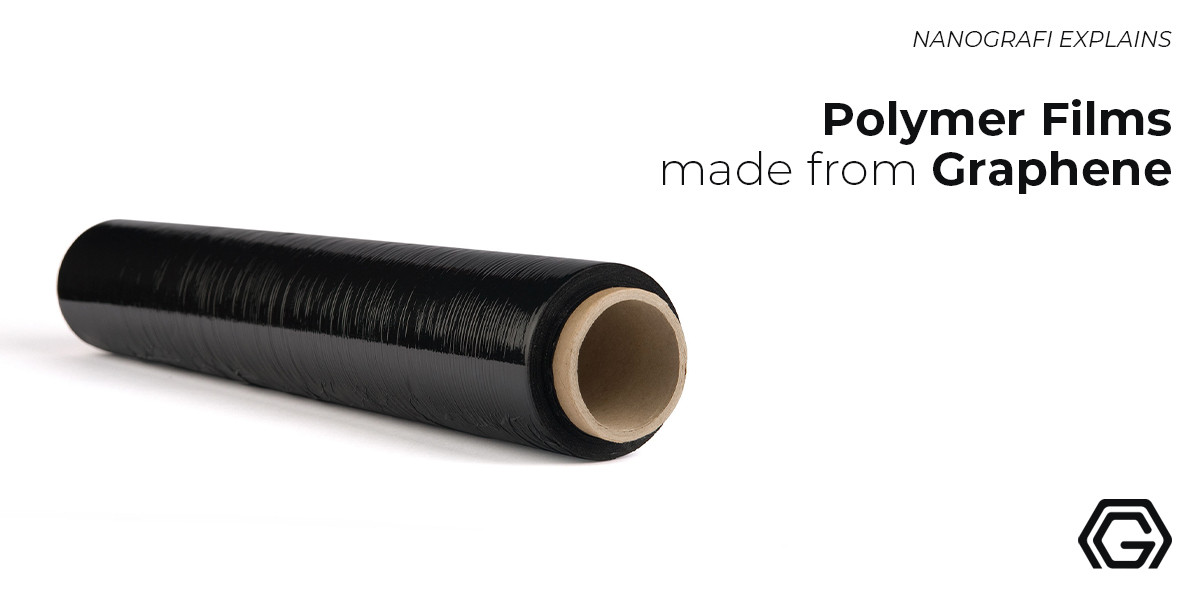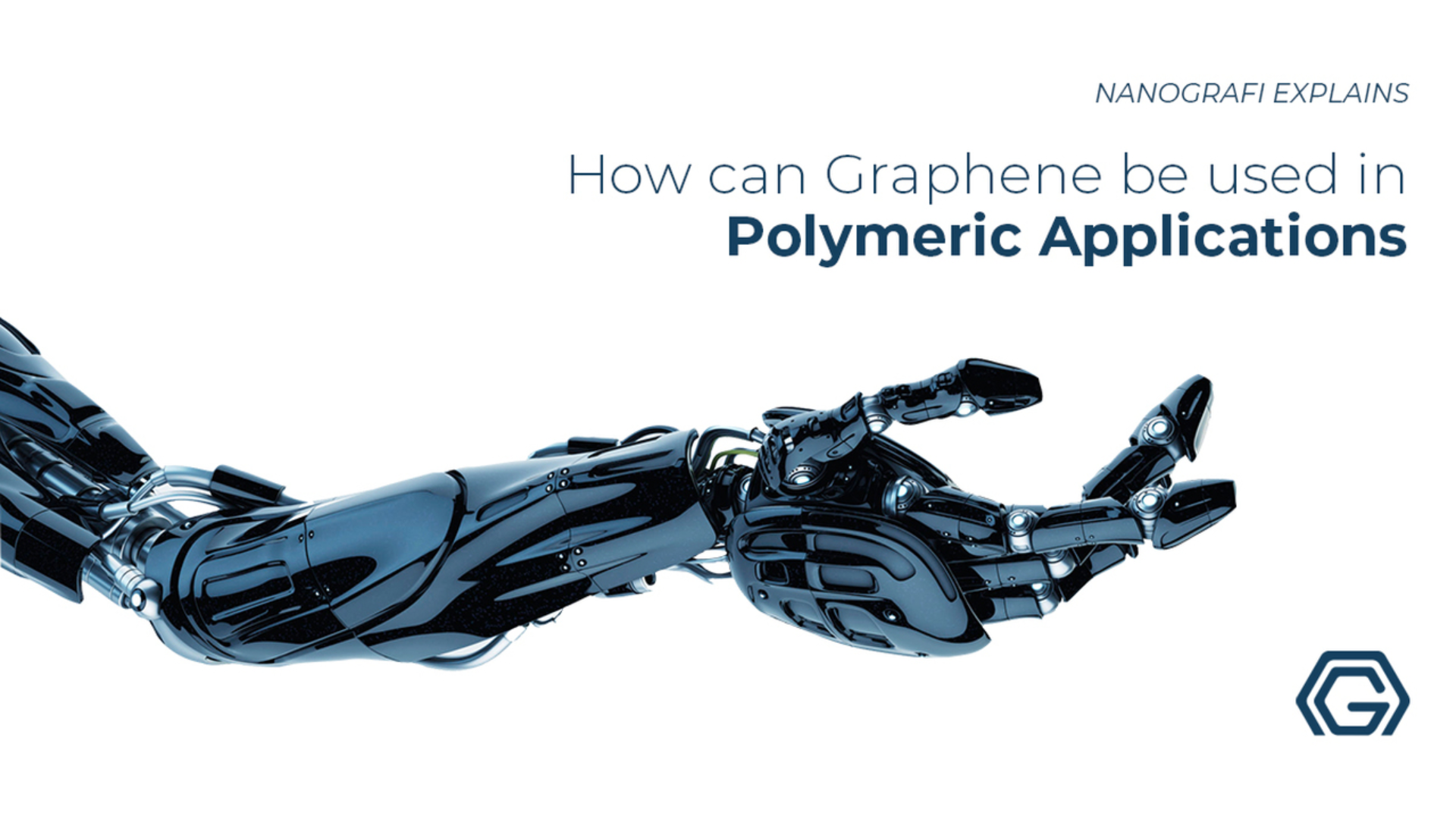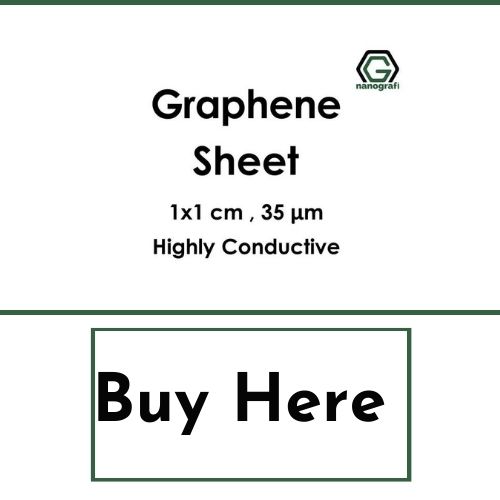Polymer Films Made from Graphene
In food packaging industry, polymers are extensively used due to their high performance, light weight, availability and low cost. among the most common and interesting polymers in food packaging industry, polyethylene (PE), polypropylene (PP), polyvinyl chloride (PVC), polystyrene (PS) and polyethylene terephthalate (PET) are among the most commonly used ones.
Vahid Javan Kouzegaran
Analytical Chemist (Ph.D.) / Nanografi Nano Technology
Introduction
Considering the barrier performance, some of these polymers possess excellent oxygen impermeability, for example polystyrene, whereas others have appropriate barrier performances against moisture and water vapor such as high density polyethylene (HDPE). Nanosheets of graphene with excellent platelet surface area and high aspect ratio are capable of providing a balanced barrier performance for polymer films through enhancing permeation torture path as well as creating strong graphing- polymer interactions. Furthermore, it is expected that polymer chains crystallinity increases through the introduction of graphene nanosheets into their structure making it an interesting and attractive area for the purpose of improving the manufacturing methods in addition to barrier properties of high-performance graphene polymer nanocomposite films. Graphene-based polymer composites with strong conductive nature as well as low density are potential agents to replace metallic components. They are basically rigid and prone to corrosion and possess high density. In fact, durable and conductive polymer composites are excellent candidates in many applications namely batteries, sensors, heat, sinks, wearable and stretchable biomedical electronic devices. Graphene can effectively improve the mechanical properties thermal and high electrical conductivity of polymer films.
Polymers, Graphene and Food Packaging
In food packaging industry, polymers are extensively used due to their high performance, light weight, availability and low cost. among the most common and interesting polymers in food packaging industry, polyethylene (PE), polypropylene (PP), polyvinyl chloride (PVC), polystyrene (PS) and polyethylene terephthalate (PET) are among the most commonly used ones. Nevertheless, many of these polymers have turned out to have disadvantages when employed in food packaging systems.
Role of Graphene in Barrier Performance
The two-dimensional single layer atoms of carbon packed densely in a honeycomb of carbon-lattice graphene is considered as a highly potential agent for applications in food packaging films in order to improve air and moisture barrier performance of polymer films. The arrangement of carbon atoms in the perfectly structured sheets of graphene lead to an excellence activity for water and gas atoms to go through. Furthermore, the high specific surface area of graphene nanosheets with their unique properties result in excellent applicability to improve the barrier properties of polymer films. Technically, graphene sheets can be combined and mixed with polymer macromolecules. The reason is graphene nano sheets have a high tendency to agglomerate because of the van Der Waals forces and interactions between the layers when they are in the reduced form. This mostly comes from the hydrophobicity quality of graphene increase due to reduction process and the propensity of these nanosheets to return to their stable form (graphite lattice) improves. Accordingly, it is a required process to modify graphene sheets in order to fabricate high barrier graphing polymer nanocomposites films. It is now a routine process to functionalize graphene nanosheets to be employed in the fabrication of highly dispersed graphene suspensions. A variety of functional groups could be employed to occupy large surface areas of graphene nanosheets including oxygen-containing functional groups and even macromolecules of polymers 1.
Role of Graphene Oxide in Barrier Performance
As it is known, graphene oxide is the product the reaction that takes place in two steps as chemical oxidation of graphite to graphite oxide with the consecutive micromechanical creation of the graphite to graphite oxide. Graphene oxide is dispersed perfectly in solvents and is compatible with the most known polymers used in food packaging Industries. It should be noticed that the stability of disperse graphene oxide nanosheets could differ from one solvents to another. Studies show that graphene oxide could be dispersed insolvent namely water, ethylene glycol, N-methyl-2-pyrrolidone (NMP), tetrahydrofuran (THF), N-methyl-2-pyrrolidone (NMP) and N,N-dimethylformamide (DMF). From another point of view, the functional groups content at the basal plane and the edge area of graphene sheets appear to have a critical role in the formation of stable colloidal graphene oxide suspensions. The functional groups like hydroxyl (─OH), carboxyl (─COOH), ketone (─C═O) and epoxide (─C─O─C─) have been used to functionalize graphene in the previously reported studies. Accordingly, it should be noted that the dispersion quality of graphene oxide is specifically related to an increase in the negative charge of graphene oxide surface area once the amount of functional groups in its structure increases. It has been demonstrated that the ionization of phenolic hydroxyl groups and carboxylic acids on the basis of plane and age of graphene oxide sheets leads to electrostatic repulsive forces to stabilize colloidal graphene oxide nanosheets.
To get more information about the uses of graphene in polymeric applications,
you can read our blog post here.
Graphene/Polymer Nanocomposites Barrier Performance
Specifically, the presence of oxygen and oxygen diffusion rate are crucial for food packaging industry. In fact oxygen can cause any direct or indirect deterioration of many foods since the environment can potentially sustain life for a lot of microorganisms. The direct oxidation causes of fruits to turn brown, the vegetable oils to be rancid and despoiling food products because of the presence of aerobic micro-organisms. The permeability quality of polymers against oxygen and moisture depends on a number of factors comprising nature of polymeric macromolecules, structure, conformation, polarity, crystallinity of polymer configuration of polymeric chains and molecular weight. It is interesting to know that the permeation of one agent to migrate depends mainly on whether other migrants are present in packaging systems. Some polymers have high oxygen impermeability in the absence of moisture but they have pool barrier performances in humidity when oxygen is present. This is the very reason that requires the introduction complex packaging systems in order to complicate packages with proper barrier as well as desired mechanical functional and structural performances 1.
Nanocomposites multi-layered films and composites are among the common strategies to get over the problem poor barrier performance. Referring to increasing publications concerning this area, nanocomposites based polymers have emerged as the solution as they are dispersed homogeneously and favorable materials that are distributed in the matrix of polymerase in a favorable fashion. Silica nanoparticles, clay nanoplatelets, green nanofibers, nanowhiskers and carbon-based nanoparticles with various morphologies can be employed in the fabrication of polymer nanocomposites. Therefore, polymer nanocomposites can exhibit numerous properties for a wide range of applications but it has to be taken into consideration that in food packaging applications, nanomaterials with platelets morphologies are favorable with their specific surface area. In addition to this, polymers with water vapor permeation resistance and high gas barrier performance are mostly considered in food packaging applications as well 1.
Graphene-Polyethylene Nanocomposites
Polyethylene for example, is among the most commonly used industrial polymer with applications in food and drug packaging industry. Technically speaking, polyethylene is a non-polar thermoplastic polymer with low cost, light weight, high flexibility and easy processing characteristics. Even though polyethylene exhibits excellent water vapor in permeability, it doesn't have adequate resistance to function as a gas resistance agent. Mechanical properties are other disadvantages of polyethylene for food packaging purposes. Polyethylene graphene nanocomposites however, have been proposed as a favorable and practical solution for the poor gas barrier performance of polyethylene in food packaging film. Furthermore, functionalized graphene oxide nanosheets are able to increase the compatibility between graphene oxide nanosheets and HDPE macromolecules.
Conclusion
When conventional polymer films are replaced with graphene polymer nanocomposites films, promising results and excellent enhancement in gas and moisture barrier performance in food packaging films are obtained along with mitigating functional and mechanical properties of polymer films. The homogeneous distribution a graphene nanosheets in polymer and their high dispersion quality can significantly affect the gas performances of nanocomposites films. Additionally, the crystalline structure of polymer matrix with remarkable influence on the barrier performance directly depends on graphene/polymer interface. Strong contractions between polymers and graphene can lead to an improvement in barrier mechanical and functional properties of final nanocomposite films.
To get more information, you can visit Blografi.
References
1. Allahbakhsh, A. High barrier graphene/polymer nanocomposite films. Food Packaging (Elsevier Inc., 2017). doi:10.1016/b978-0-12-804302-8.00020-0.
2. Tarhini, A. A. & Tehrani-Bagha, A. R. Graphene-based Polymer Composite Films with Enhanced Mechanical Properties and Ultra-high In-plane Thermal Conductivity. Compos. Sci. Technol. 184, 107797 (2019).
Recent Posts
-
Nanocomposites in Food Packaging
The utilization of nanocomposites in food packaging represents a significant advancement in the fiel …19th Apr 2024 -
What is the Difference Between 7075 and 6061 Aluminum Alloy?
When comparing 7075 aluminum alloy to 6061 aluminum alloy, it's essential to understand their disti …5th Apr 2024 -
Iron-Air Batteries: The Ultimate Guide
Iron-air batteries represent a significant breakthrough in energy storage technology, offering a sus …29th Mar 2024







